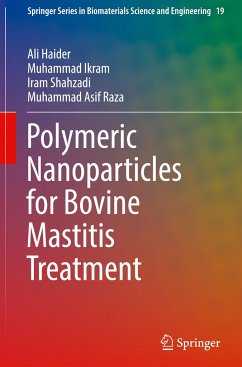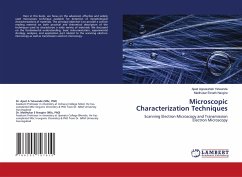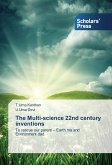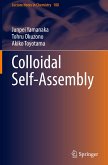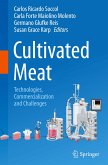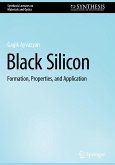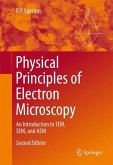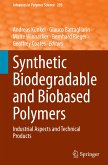- Gebundenes Buch
- Merkliste
- Auf die Merkliste
- Bewerten Bewerten
- Teilen
- Produkt teilen
- Produkterinnerung
- Produkterinnerung
This book features an in-depth examination of the ongoing problem of bovine mastitis and the potential solutions offered by polymer nanoparticles. With extensive research and analysis, the book delves into the causes and consequences of bovine mastitis, including the shift in the relevance of various infections and the increasing problem of antibiotic resistance. The authors explore the use of nanoparticles as a potential alternative to traditional antibiotics and the importance of tailoring their characteristics for specific uses. Detailed discussions of the pros and cons of different…mehr
Andere Kunden interessierten sich auch für
![Microscopic Characterization Techniques Microscopic Characterization Techniques]() Ajeet Appasaheb YelwandeMicroscopic Characterization Techniques19,99 €
Ajeet Appasaheb YelwandeMicroscopic Characterization Techniques19,99 €![The Multi-science 22nd century inventions The Multi-science 22nd century inventions]() T.Uma KanthanThe Multi-science 22nd century inventions74,99 €
T.Uma KanthanThe Multi-science 22nd century inventions74,99 €![Colloidal Self-Assembly Colloidal Self-Assembly]() Junpei YamanakaColloidal Self-Assembly123,99 €
Junpei YamanakaColloidal Self-Assembly123,99 €![Cultivated Meat Cultivated Meat]() Cultivated Meat177,99 €
Cultivated Meat177,99 €![Black Silicon Black Silicon]() Gagik AyvazyanBlack Silicon31,99 €
Gagik AyvazyanBlack Silicon31,99 €![Physical Principles of Electron Microscopy Physical Principles of Electron Microscopy]() R. F. EgertonPhysical Principles of Electron Microscopy67,99 €
R. F. EgertonPhysical Principles of Electron Microscopy67,99 €![Synthetic Biodegradable and Biobased Polymers Synthetic Biodegradable and Biobased Polymers]() Synthetic Biodegradable and Biobased Polymers216,99 €
Synthetic Biodegradable and Biobased Polymers216,99 €-
-
-
This book features an in-depth examination of the ongoing problem of bovine mastitis and the potential solutions offered by polymer nanoparticles. With extensive research and analysis, the book delves into the causes and consequences of bovine mastitis, including the shift in the relevance of various infections and the increasing problem of antibiotic resistance. The authors explore the use of nanoparticles as a potential alternative to traditional antibiotics and the importance of tailoring their characteristics for specific uses. Detailed discussions of the pros and cons of different manufacturing procedures and characterizations of bovine mastitis, drug-resistant bacteria, and resistance development make this monograph an invaluable resource for researchers and experts in the field of veterinary medicine, and an excellent resource for those interested in investigating the viability of nano-materials as future antibiotic alternatives.
Produktdetails
- Produktdetails
- Springer Series in Biomaterials Science and Engineering 19
- Verlag: Springer / Springer Nature Switzerland / Springer, Berlin
- Artikelnr. des Verlages: 978-3-031-39946-6
- 2023
- Seitenzahl: 160
- Erscheinungstermin: 23. September 2023
- Englisch
- Abmessung: 241mm x 160mm x 15mm
- Gewicht: 412g
- ISBN-13: 9783031399466
- ISBN-10: 3031399463
- Artikelnr.: 68336760
- Herstellerkennzeichnung Die Herstellerinformationen sind derzeit nicht verfügbar.
- Springer Series in Biomaterials Science and Engineering 19
- Verlag: Springer / Springer Nature Switzerland / Springer, Berlin
- Artikelnr. des Verlages: 978-3-031-39946-6
- 2023
- Seitenzahl: 160
- Erscheinungstermin: 23. September 2023
- Englisch
- Abmessung: 241mm x 160mm x 15mm
- Gewicht: 412g
- ISBN-13: 9783031399466
- ISBN-10: 3031399463
- Artikelnr.: 68336760
- Herstellerkennzeichnung Die Herstellerinformationen sind derzeit nicht verfügbar.
Dr. Ali Haider is a highly accomplished veterinarian with a background in clinical medicine and dairy farm management. He obtained his Master's degree in Clinical Medicine from the University of Veterinary and Animal Sciences (UVAS) in Pakistan in 2015, and later earned his Ph.D. in Clinical Medicine from UVAS in 2021. Prior to joining the Faculty of Veterinary and Animal Sciences at Muhammad Nawaz Shareef University of Agriculture Multan as an Assistant Professor of Clinical Sciences in 2022, Dr. Haider worked as a Dairy Farm Manager at several reputed commercial dairies in Punjab, Pakistan. His research interests include the green synthesis and characterization of inorganic semiconductor nanomaterials, polymeric nanostructures, and 2D materials for their use in catalytic, antiparasitic, and antibacterial applications against multiple drug-resistant pathogens. Dr. Muhammad Ikram is a distinguished physicist with expertise in inorganic semiconductor nanomaterials and 2D materials. He obtained his Master's degree in Physics from BZU Multan in 2010 and his Ph.D. in Physics from Government College University (GCU) Lahore through a joint project with the University of Delaware in 2015. Prior to joining GC University Lahore as an Assistant Professor of Physics and Principal of the Solar Cell Applications Lab in 2017, Dr. Ikram served as deputy director of Manuscript Science at the Punjab textbook board. He has received multiple awards for his research including a Seal of Excellence Marie Sk¿odowska Curie Actions Individual Fellowship in 2017 and 2020, and was named as one of the top 2% scientists from Pakistan by Stanford University in 2021. His research interests include the synthesis and characterization of inorganic semiconductor nanomaterials, and 2D materials for use in water treatment, optoelectronic, and electrocatalytic applications. Iram Shahzadi is a highly accomplished researcher in the field of pharmaceutical chemistry. She received her Master's degree in Pharmaceutical Chemistry from Punjab University College of Pharmacy (PUCP) in 2019, where she was awarded the University Gold Medal. She is currently pursuing her doctorate in Pharmaceutical Chemistry at PUCP and has held the position of Lecturer at Quaid e Azam Pharmacy College in Pakistan. Her research interests include the green synthesis, characterization, and potential applications of inorganic nanomaterials, including their use as catalysts, photo catalysts, anti-oxidants, anti-inflammatories, and for drug loading and release of anti-cancer drugs. Dr. Muhammad Asif Raza contains extensive experience working in a variety of countries as researcher and academic leader. He completed his doctorate in Germany and postdoctoral research in Mexico, and has held academic positions at universities in the United Arab Emirates and Germany. Currently, he serves as the Chairman/Head of the Department of Pathobiology and Coordinator/acting Deanof the Faculty of Veterinary and Animal Sciences at Muhammad Nawaz Shareef University of Agriculture (MNSUA) Multan, where he has been working as an associate professor since 2017. His research interests include surveillance, sero-diagnosis, sero-epidemiology, and ethno-veterinary practices for the control of bacterial, viral, parasitic, and protozoal diseases in poultry and livestock. He has published over fifty scholarly papers in high-quality journals.
Chapter 1. Introduction.- Chapter 1.1 History of polymers.- Chapter 1.2 Types of polymers.- Chapter 1.3 History of polymeric nanoparticles.- Chapter 1.4 Characteristics of polymeric nanoparticle.- Chapter 1.5 Development of polymeric nanoparticles.- Chapter 2. Fabrication of nanomaterials.- Chapter 2.1 Introduction Chapter.- 2.2 Top-down methods.- Chapter 2.3 Bottom-up methods.- Chapter 2.4 Labelling of polymeric nanoparticles.- Chapter 3. Properties and characterization of nanomaterials.- Chapter 3.1 Optical properties.- Chapter 3.2 Electronic properties.- Chapter 3.3 Thermal properties.- Chapter 3.4 Mechanical properties Chapter.- 3.5 Distinctive properties Chapter.- 3.6 Ultraviolet visible spectroscopy (UV-Vis) Chapter.- 3.7 X-Ray Diffraction.- Chapter 3.8 Raman spectroscopy Chapter.- 3.9 Fourier transform infrared spectroscopy (FTIR) Chapter.- 3.10 Fluorescent spectroscopy Chapter.- 3.11 Scanning Electron Microscopy (SEM).- Chapter 3.12 Transmission Electron Microscopy (TEM) Chapter 3.13 Atomic Force Microscopy (AFM) Chapter 3.14 X-Ray Photoelectron Spectroscopy (XPS).- Chapter 4. Bovine Mastitis.- Chapter 4.1 Introduction.- Chapter 4.2 Bovine udder Anatomy.- Chapter 4.3 Classification of bacteria.- Chapter 4.4 Epidemiology of mastitis.- Chapter 4.5 Etiology of mastitis.- Chapter 4.6 Predisposing factors.- Chapter 4.7 Characteristics of disease.- Chapter 4.8 Pathogenesis of disease.- Chapter 4.9 Clinical Signs and symptoms.- Chapter 4.10 Treatment.- Chapter 4.11 Prevention and control.- Chapter 5. Antibiotic drug resistance.- Chapter 5.1 Introduction.- Chapter 5.2 Antibiotic types Chapter 5.3 Antibiotic classification Chapter 5.4 Mechanism of action of antibiotics Chapter 5.5 Drug resistance and bovine mastitis.- Chapter 5.6 Methods of drug resistance.- Chapter 6. Polymeric nanoparticles for bovine mastitogens.- Chapter 6.1 Introduction.- Chapter 6.2 Polymeric nanoparticles as antimicrobials.- Chapter 6.3 In-vitro experimentation of polymeric nanoparticles.- Chapter 6.4 Mechanism of action of polymeric nanoparticles.- Chapter 6.5 Polymeric nanoparticles; A future perspective.
Chapter 1. Introduction.- Chapter 1.1 History of polymers.- Chapter 1.2 Types of polymers.- Chapter 1.3 History of polymeric nanoparticles.- Chapter 1.4 Characteristics of polymeric nanoparticle.- Chapter 1.5 Development of polymeric nanoparticles.- Chapter 2. Fabrication of nanomaterials.- Chapter 2.1 Introduction Chapter.- 2.2 Top-down methods.- Chapter 2.3 Bottom-up methods.- Chapter 2.4 Labelling of polymeric nanoparticles.- Chapter 3. Properties and characterization of nanomaterials.- Chapter 3.1 Optical properties.- Chapter 3.2 Electronic properties.- Chapter 3.3 Thermal properties.- Chapter 3.4 Mechanical properties Chapter.- 3.5 Distinctive properties Chapter.- 3.6 Ultraviolet visible spectroscopy (UV-Vis) Chapter.- 3.7 X-Ray Diffraction.- Chapter 3.8 Raman spectroscopy Chapter.- 3.9 Fourier transform infrared spectroscopy (FTIR) Chapter.- 3.10 Fluorescent spectroscopy Chapter.- 3.11 Scanning Electron Microscopy (SEM).- Chapter 3.12 Transmission Electron Microscopy (TEM) Chapter 3.13 Atomic Force Microscopy (AFM) Chapter 3.14 X-Ray Photoelectron Spectroscopy (XPS).- Chapter 4. Bovine Mastitis.- Chapter 4.1 Introduction.- Chapter 4.2 Bovine udder Anatomy.- Chapter 4.3 Classification of bacteria.- Chapter 4.4 Epidemiology of mastitis.- Chapter 4.5 Etiology of mastitis.- Chapter 4.6 Predisposing factors.- Chapter 4.7 Characteristics of disease.- Chapter 4.8 Pathogenesis of disease.- Chapter 4.9 Clinical Signs and symptoms.- Chapter 4.10 Treatment.- Chapter 4.11 Prevention and control.- Chapter 5. Antibiotic drug resistance.- Chapter 5.1 Introduction.- Chapter 5.2 Antibiotic types Chapter 5.3 Antibiotic classification Chapter 5.4 Mechanism of action of antibiotics Chapter 5.5 Drug resistance and bovine mastitis.- Chapter 5.6 Methods of drug resistance.- Chapter 6. Polymeric nanoparticles for bovine mastitogens.- Chapter 6.1 Introduction.- Chapter 6.2 Polymeric nanoparticles as antimicrobials.- Chapter 6.3 In-vitro experimentation of polymeric nanoparticles.- Chapter 6.4 Mechanism of action of polymeric nanoparticles.- Chapter 6.5 Polymeric nanoparticles; A future perspective.

